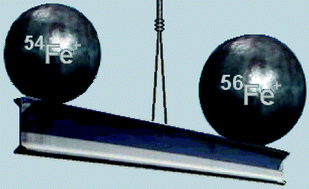Revised exponential model for mass bias correction using an internal standard for isotope abundance ratio measurements by multi-collector inductively coupled plasma mass spectrometry†
Abstract
An internal standard (IS) can be used to account for moderate, matrix-related shifts in mass bias using multi-collector inductively coupled plasma mass spectrometry through the empirical, linear relationship between measured isotope abundance ratios for different elements in ln-ln space. Unfortunately, erroneous mass bias corrected isotope abundance ratios may be returned by the model, requiring artificial adjustment of the true isotope abundance ratio of the IS. Although inadequate correction for peak tailing has been convincingly used to explain this problem, our analysis of the literature describing the development of the mass bias correction model using an IS reveals the presence of a source of systematic error. The origin of this error is purely mathematical and is eliminated in the revised model presented, in which mass bias corrected isotope abundance ratios are independent of the isotopic composition of the IS. An expression for computing the total combined uncertainty in the corrected ratio, incorporating contributions from the linear model, the isotopic reference material, and measurements of analyte element and IS in the sample, is also derived.


 Please wait while we load your content...
Please wait while we load your content...